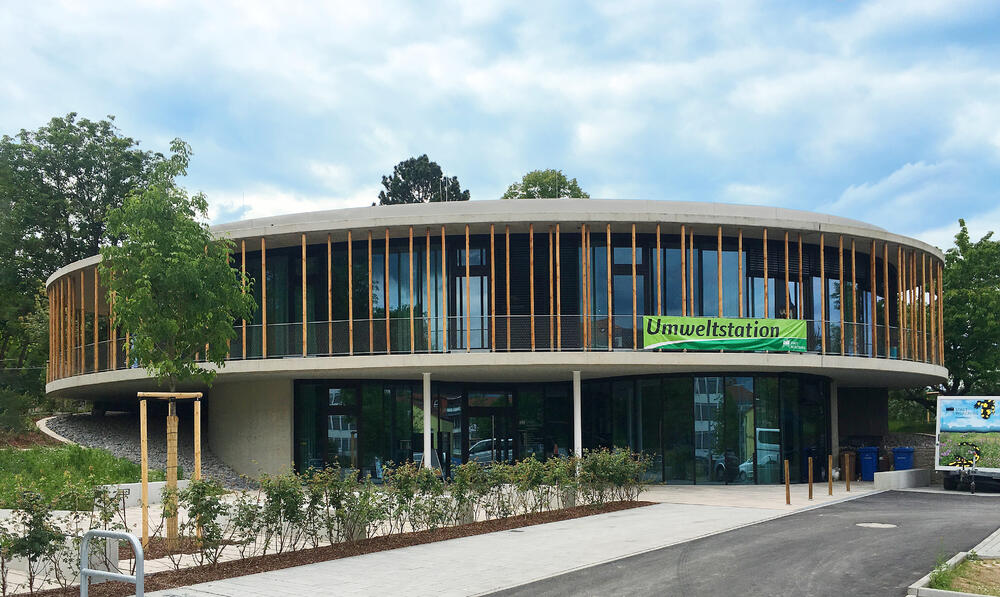DBU aktuell No. 6 | 2019 | English
Information on Grant Support Activities of the German Federal Environmental Foundation (Deutsche Bundesstiftung Umwelt)
1.) Bright, airy and environmentally friendly: recycled concrete for the construction of new buildings
“Construction projects that use recycled concrete, like the new Environmental Station in the city of Würzburg, demonstrate that a circular economy is also possible in the construction industry – a field that generally requires a great deal of resources,” emphasized Anja Knieper, head of the Würzburg Environmental Station. The newly constructed home of the renowned environmental education institution opened its doors in May: an elliptically shaped building, similar to a pavilion, in which the focus during construction was on the use of environmentally friendly materials. For this reason, the building was made using cast-in-place concrete with recycled aggregates from the foundation to the ceiling, and in some parts with exposed concrete. This makes the Environmental Station the first public building in Bavaria to be built using recycled concrete.
Construction is one of the most resource-intensive industrial sectors. A total of 517 million tonnes of mineral raw materials are used annually in construction projects in Germany alone. Conventional concrete production involves extraction of gravel and crushed rocks, which in turn involves a great deal of land usage, often leaving behind barren landscapes. The use of recycled concrete protects both natural ecosystems and the landscape, the overall energy consumption for the production is much lower than that required for primary construction materials, and, if the recycled materials are obtained locally, this eliminates the need for heavy-duty transport across long distances, which in turn conserves fuel and reduces harmful emissions.
“The new Environmental Station was greeted with a great deal of scepticism during the construction phase because a lot of concrete was used. But the locals are extremely pleased when we tell them that this used to be the old motorway bridge from nearby,” reports Knieper. The building is no ugly concrete block, either: the head of the Environmental Station feels that ‘her’ house is welcoming, bright and airy. The Würzburg Environmental Station was exemplary long before the construction of its new home: in 1990, an environmental information centre was established in Würzburg in time for Germany’s national horticultural show. This information centre was the inspiration for the state-wide concept of environmental stations. Today there are 60 stations across Bavaria.
The city of Würzburg began planning the construction of a new building when the old building was no longer large or modern enough to house the station. Without a special source of inspiration, it’s possible that the new building might not have used recycled concrete: according to Knieper, the DBU awarding the German Environmental Prize to the two pioneers of recycled concrete, Prof. Dr.-Ing. Angelika Mettke from the Brandenburg University of Technology Cottbus–Senftenberg and the entrepreneur Dr. Walter Fees from Kirchheim unter Teck, in Würzburg in 2016 is what tipped the scales.
Consequently, Prof. Dr.-Ing. Mettke, winner of the Environmental Prize, worked diligently on the construction project, providing her unique expertise. The DBU supported the environmentally friendly construction as well as the building’s innovative energy concept.


